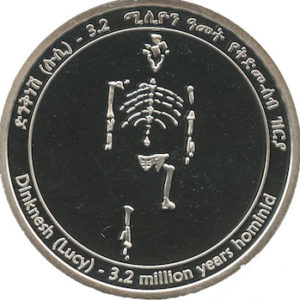
Australopithecus afarensis
*On this date in 1974, Australopithecus afarensis, or AL 288-1, was discovered in Ethiopia. These were several hundred pieces of bone fossils representing 40 percent of the skeleton of a female of the hominin species.
In Ethiopia, the assembly is known as Dinkinesh, which means "you are marvelous" in the Amharic language. In the Western language, the discovery is known as Lucy. Paleoanthropologist Donald Johanson of the Cleveland Museum of Natural History discovered Lucy near the village Hadar in the Awash Valley of the Afar Triangle in Ethiopia.
The Dinknesh specimen is an early australopithecine dated about 3.2 million years ago. The skeleton presents a small skull akin to that of non-hominin apes, plus evidence of a walking gait that was bipedal and upright, akin to that of humans (and other hominins); this combination supports the view of human evolution that bipedalism preceded the increase in brain size.
The additional name "Lucy" was acquired from the song "Lucy in the Sky with Diamonds" by The Beatles, played loudly and repeatedly in the expedition camp all evening after the excavation team's first day of work on the recovery site. After the public announcement of the discovery, Dinknesh captured much public interest, with Lucy becoming a household name at the time. Lucy became famous worldwide, and the story of her discovery and reconstruction was published in a book by Johanson. Beginning in 2007, the fossil assembly and associated artifacts were exhibited publicly in an extended six-year tour of the United States; the exhibition was called Lucy’s Legacy: The Hidden Treasures of Ethiopia.
There was a discussion of the risks of damage to the unique fossils, and other museums preferred to display casts of the fossil assembly. The original fossils were returned to Ethiopia in 2013, and subsequent exhibitions have used casts. A 2016 study proposes that Australopithecus afarensis was also largely tree-dwelling, though the extent of this is debated.